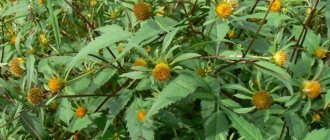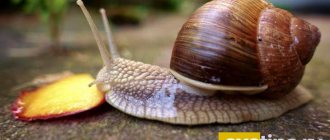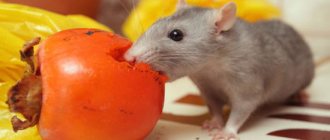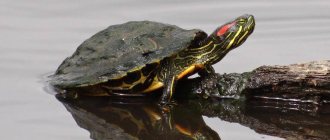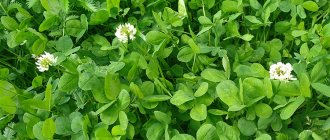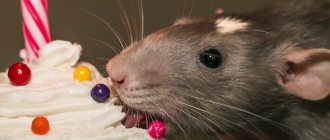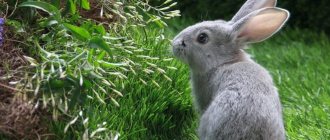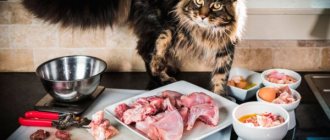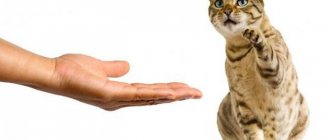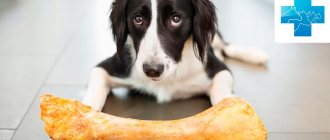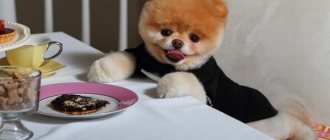The nutrition of parrots is the basis of their health and longevity, which means this issue must be approached responsibly. Therefore, from a very early age, the bird needs to choose the right diet. Remember that ordinary food from the human table can be not only harmful to birds, but also deadly.
This article will discuss the basics of proper feeding of a parrot, which will ensure its longevity and health. This is a grain mixture, greens and sprouts, cereals, vegetable and fruit components, branch food and drink. By combining these products and offering the pet a varied menu, owners can satisfy the needs of the birds as much as possible.
Is it possible to give a parrot bread?
White (wheat) bread can be given to parrots. ... Millet, oats, and seeds will be useful for the parrot. Once a week you can treat him with such a delicacy as grated carrots, beets, eggs, cheese (but only homemade). The parrot must have fresh water in its cage.
Interesting materials:
In what year did the Roman Empire fall? In what year was the Lugansk region renamed? In what year was Mariupol renamed? In what year was the Hermitage repainted? In what year was the capital of Kazakhstan moved? In what year did you switch to a five-day week? In what year did the Soviet Union cease to exist? In what year did they stop accepting Pioneers? In what year did you transfer to 1 year of service? What year is the song "Smoke of Menthol Cigarettes"?
Can parrots eat porridge?
Porridge is given to wavy animals of any age. It is recommended to start introducing them into the diet from birth. Small chicks are fed liquid mixtures of wheat and semolina. Crushed eggshells, almost ground into flour, are added to the finished dish. Newly hatched parakeets are syringe fed.
How to prepare porridge and feed the chick in the first days.
With regular consumption of porridge, wavy animals acquire strong immunity against infectious diseases. This is explained by the fact that cereals saturate the body with B vitamins, microelements and proteins. And the presence of fiber in them regulates the functioning of the digestive organs.
What grains are used for cooking
The most valuable porridges for a budgie are buckwheat, oatmeal, rice and pearl barley. Since millet is the basis of your feathered pet’s diet, boil it and gradually add other ingredients to the mixture. Millet should not exceed half of the total poultry diet.
1/4 Parrot menuPreparing for breeding. How to properly cook porridge for a parrot
List of allowed cereals:
- oatmeal;
- rice;
- buckwheat;
- wheat;
- corn;
- barley;
- pearl barley
Do not cook the porridge until fully cooked; it should be slightly damp. Oatmeal and buckwheat can be brought to a boil, then removed from heat, cover and leave for half an hour. It is also acceptable to steam cereals in a thermos. To do this, simply pour boiling water over them, cover and let sit for 6 hours.
Millet
This cereal does not require long cooking. Bring it to a boil, leave for 10-15 minutes and remove from heat. If you want to enrich millet with useful substances, add crushed boiled eggs or pieces of fruit.
porridge for parrots (basic)
Buckwheat
You can cook this porridge or steam it in a thermos. In the first case, fill it with water and keep it on the fire after boiling for 10 minutes. Then leave to simmer for half an hour. If you cook in a thermal mug, pour boiling water over the cereal and close the container with a lid. The dish will be ready in 6 hours.
Oatmeal
For oatmeal, buy regular cereal without additives and slow cooking. Fill them with water and cook for 10-15 minutes.
Jachka
Crushed cereals are useful for small chicks and parrots weakened by illness, as they are a good source of energy and are easier to digest in the gastrointestinal tract. Healthy parrots should be fed whole grains. Boil the cell for 10-15 minutes or steam in a thermos. You can mix it with grated raw carrots.
Porridge for parrots. Cooking porridge for Toshenka and Chika
Brown rice
Experienced breeders recommend using only wild and brown rice. The cereals are cooked for about 20-25 minutes, removed from the heat and simmered under the lid for half an hour.
Legumes – mung bean, peas, lentils
Soak the grains overnight and cook for 20-30 minutes in the morning. Cook red, green and pink lentils without soaking. Give green and brown ones in a soaked form.
Corn
This cereal takes a long time to prepare and requires pre-soaking for 6 hours. Cook for 20-25 minutes, serve warm.
Fruits, vegetables and berries
If you have a cockatiel parrot at home, its care, maintenance, and feeding, like other types of birds, must be carried out according to certain rules and taught to them from a very early age. Fruit and vegetable additives must be on the poultry menu. If a bird refuses to eat a healthy product, then the owner’s task is to convince it otherwise. for example, offering the parrot beautifully chopped carrots. Be creative and present food to the bird in different forms and designs! Be patient and don't give up.
Despite all the usefulness of fruits, the right question for the owner would be: Which fruits can parrots eat and which ones can’t? It will be useful to include in your pet’s diet: apricot, cherry, pineapple, plum, apple, pear, peach.
Feeding your cockatiel, Gray or other bird species can be supplemented with berries and citrus fruits such as: oranges, watermelons, gooseberries, pineapple, lingonberries, viburnum, strawberries, blueberries, cranberries, kiwi, red and black currants, tangerines, kiwi. Just in case, it is better to remove the peel from citrus fruits, and remove the pits from fruit crops such as cherries, apricots and plums. Berries collected in the summer can be frozen and offered to the parrot defrosted in the winter.
Healthy vegetables for parrots are carrots, pumpkin, zucchini, tomato, cucumber, pepper, zucchini, and rutabaga. Cauliflower and Brussels sprouts, broccoli, beets, turnips and green peas can also be given to birds, but they must first be blanched (scalded and left in boiling water for a few minutes). Some bird owners know what vegetables their parrot can eat, but they boil them before putting them in the cage. It is better to offer them fresh, since when cooked, vegetables will lose all their beneficial vitamins and microelements.
When feeding a cockatiel parrot or other species of these birds, you should not include: potatoes, avocados, fresh mangoes, persimmons, fresh papaya, candied fruits sold in stores. Please note that mango and papaya are found dry in mixtures, in which case they are harmless.
Hard food
The daily diet of parrots should include a grain composition. This is the basis without which it is difficult to imagine proper nutrition. When to pour food into the feeder (the daily norm once a day or add food several times a day) does not really matter, the main thing is that the parrot always has enough food, since they can do without food for no more than 24 hours.
Pet stores offer a wide selection of grain mixtures, ranging from the diet of budgerigars to large birds. Feed compositions vary depending on the size of the pet and its natural habitat. The following brands have proven themselves well: Italian Padovan, Belgian Versele-Laga, Italian Fiory, Russian RIO. When purchasing, be sure to make sure that the grain feed is tightly packaged and that its expiration date has not expired. Before pouring it into the bird's feeder, carefully inspect the grain to ensure there are no foreign impurities in it.
The nutrition of budgerigars or other species of these birds can be diversified by germinating the grain mixture. Sprouts are a storehouse of vitamins for parrots, which will have a beneficial effect on the functioning of your pet’s entire body. Please note that if you do not wait for the greenery to fully germinate (to the point of grass), but give a slightly hatching sprout, then such feeding provokes sexual behavior in birds. In addition to very young shoots, the bird also needs ordinary greens (nettle, lettuce, fireweed, dandelion). Greens from oats, wheat, and lettuce can also be grown on your windowsill.
When feeding Grays or other large birds, keep in mind that mixtures for large parrots already include nuts and seeds, so you should not offer them separately; use them separately only as a reward or treat.
Water and juices
All birds must receive water. The amount depends on how much vegetables, fruits and food the birds eat, as well as on the temperature in the room. You may think that water for parrots does not require replacement every day, because your pet drinks very little. But that's not true. There should be fresh, clean water in your pet's cage every day. Moreover, in summer it is worth pouring fresh liquid into the drinking bowl 2 times a day.
Figuring out what kind of water to give parrots is not difficult. Just do not give your birds tap water, boiled water or carbonated water. It is best to give bottled water without gas, which contains potassium (at least 20), magnesium, and sodium. You can offer your parrot filtered liquid from the tap, but in this case you must constantly monitor the condition of the filter. You can add a little lemon juice, a decoction of chamomile or rose hips to the water.
Juices are also very useful for a parrot. They need to be made in a juicer from vegetables or fruits (from the approved list) or bought ready-made in jars intended for baby food. If you offer your parrot store-bought baby juices, make sure they are sugar-free. Juices can be diluted with water. Make sure that the juice does not sit in the drinker for too long; juices quickly deteriorate in the heat.
Did you like the article? Share it with your friends!
Branch food
In order for you to have healthy, active and beautiful budgies, care and feeding must be correct. This means that their diet must contain twig food in addition to grain mixtures, fresh fruits and vegetables. Many bird owners do not suspect that twigs are needed for complete nutrition, and not just for beak care. Through twig food, the parrot receives healthy fiber and microelements.
What trees can you give a parrot? Among those common in Russia are the branches of birch, alder, hazel, cherry, willow, elderberry, aspen, linden, maple, apple, and rowan. They must first be disinfected - scalded with boiling water. Remember that you only need to collect branches away from roads and highways!
Branch food can be offered not only in summer, but also in winter. To do this, cut branches need to be placed in water until the buds swell. Next, you should rinse and scald them with boiling water.
The importance of twigs cannot be underestimated, because in addition to their nutritional value, a parrot can use them as exciting fun, an activity for its beak and paws.
Porridge recipes
Porridge can be made from one or several types of cereals. It is useful to enrich dishes with vegetables and fruits. Here are two recipes with different ingredients and cooking methods.
Cooking porridge for budgies and other parrots, part 3
Boiled mixture with vegetables
Pour an equal portion of cereals into the pan: buckwheat, oatmeal, brown rice. Rinse them with running water.
Cooking:
- Pour a small amount of water over the cereal.
- Cook for 10-15 minutes.
- Remove from heat and simmer covered for half an hour.
- Wait until it cools down; if there is any water left, drain it.
Before feeding your pet, sprinkle the dish with grated vegetables. The porridge should not be too soft; the parrot should easily grasp it with its beak.
A mixture of cereals steamed in a thermal mug
Take several types of cereals: buckwheat, pearl barley, corn, red lentils, mung bean, rice and millet. Rinse and place in a thermos or thermal mug.
PORridge FOR A BUDGY PARROT!
Preparation of the mixture:
- Pour boiling water over the cereals.
- Leave to steam for 6 hours.
- Pour the mixture out of the container and drain the water.
- Add sprouted mung bean grains and a drop of honey.
Birds also have their own taste preferences. Choose the types of cereals that your pet loves. See what consistency he likes best. If the parrot is more willing to eat crumbly porridge, then evaporate the liquid completely, and if it is thick, then add more water when cooking.
What is forbidden to feed?
Now that we know what can be given to budgies, let's talk about forbidden foods. Among the vegetables prohibited for parrots are: radishes, celery, onions, eggplant and garlic. Prohibited foods include some fruits: avocado, mango, persimmon. In addition, any herbs (parsley, cilantro, dill) can ruin the health of the bird.
Many people ask questions about what other food is not included in the list of permitted foods. Products such as bread (made from salt, yeast or low varieties of wheat), salt (this is poison for this type of bird), milk (parrots do not have enzymes to process it), chocolate can also be detrimental to the health of these birds.
Minerals
Artificial vitamins and minerals are fed approximately once a quarter. The course of treatment is 2 weeks. The ideal mineral supplement of natural origin is considered to be sepia or cuttlefish shell, which is left in the cage until it is completely crushed by the bird. If a budgerigar consumes sepia, then it does not need additional supplements containing calcium, but it is impossible to completely abandon vitamins. For example, for better absorption of the substances contained in the shell, vitamin D is needed, as well as an amino acid. Amino acids are found in cereals. Most of them are found in buckwheat, wheat, wild rice and oats, and legumes. Calcium is found in spinach and beet tops.
Some owners, in their desire to maintain the health of lovebirds at the proper level, oversaturate the bird’s body with fish oil containing vitamins A, D, E. But a large amount of seemingly necessary substances can be harmful.
What else can you give?
Animal food is also useful for lovebirds, other birds kept at home, for example, birds are occasionally fed:
- kefir;
- fermented baked milk;
- curdled milk;
- yoghurts;
- children's fruit curds;
- cottage cheese.
You can add 1 drop of honey to the cottage cheese. Boiled chicken and quail eggs are also useful. Birds will not ignore grasshoppers and other living creatures, but it is better to purchase live food in specialized stores to avoid infecting birds with parasites.
